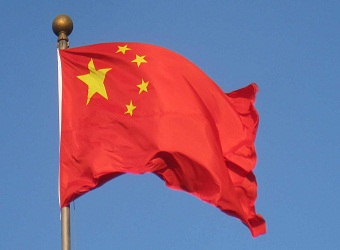Chaotic trade in Chinese commodity futures is offering new opportunities for international exchanges that are trying to get raw material traders to manage their risks amid high turnover and price volatility on mainland exchanges.
Last year, exchanges in China posted record turnover in commodity futures contracts. That underscored ample liquidity and a strong risk appetite in the world’s largest consumer of many raw material products, including key steel-making material iron ore.
That is, China is changing the dynamics of trade from price-setting to risk management. But outside of the country, steel and its related derivatives are still trying to attract greater participation, unlike high-profile economic barometer counterparts such as copper and crude oil.
Still, a changing trade environment with China as a major participant is spurring hedging in a market plagued by price swings.
Some traditional steelmakers, notably in Europe, are already hedging in some of the derivative products due to price volatility, according to Jarek Mlodziejewski, ferrous derivatives analyst at The Steel Index.
And while the Chinese can trade and arbitrage between onshore and offshore markets, it is difficult for international traders without a licensed subsidiary in China to trade on the mainland.
This is where international exchanges can step in as a platform to engage with a potentially huge market seeking to manage risk globally. 
One of the exchanges that has already gained a foot in the door is the Singapore Exchange (SGX), which in the last few years has seen growth in its iron ore derivatives.
Its most heavily traded iron ore futures product saw a 17 percent rise in trade volumes in March from a year ago and a 50 percent rise from February. They fell 7 percent from a year ago in April.
“Chinese steel has grown from nothing to the behemoth it is now, that’s throwing things into disarray,” said Mlodziejewski from the Steel Index, which runs daily price assessments of the metal on which some SGX derivatives are based.
On the London Metal Exchange, about 1,500 lots of steel futures contracts were traded each day in April against the exchange’s most active contract was aluminium, which saw some 200,000 lots changing hands every day. Millions of lots of steel rebar futures are traded daily on the Shanghai Futures Exchange.
Iron ore and coking coal futures fare better on the SGX and CME platforms, but still lag behind their counterparts China.
Trade in SGX iron ore futures stood at 1.7 million contracts in April. On the Dalian Commodity Exchange, over a million contracts of iron ore futures change hands every day.
Contract sizes differ between exchanges but overall trade volumes on Chinese exchanges still vastly outsize those on bourses overseas.
Mlodziejewski said there is further scope for trade participation in derivatives that are already heavily-trade in China, but are in their budding stages elsewhere.
Despite widespread criticism that the Chinese commodities exchanges are rife with retail investor speculation, their wild price moves still influence global pricing. Although Chinese traders are willing to jump into derivatives, their more conservative international counterparts have shied away from that tool.
This is now changing, experts said, which opens up opportunities for the likes of SGX.
And even Chinese steel mills will be interested in participating in derivatives trading on exchanges overseas as they “grow up” in the next few years, said iron ore and coal trader Liu Tao at Mercuria Energy Trading.
“Sooner or later, they will realize they should hedge…(especially) in the back end of the curve. If you talk about back end of the curve, Chinese futures will not cover that liquidity,” Liu said at the Singapore Iron Ore Forum in April.
Despite the potential, cracking the Asian derivatives trade outside China has not been easy.
Most recently, the Singapore Mercantile Exchange suffered from years of losses before it was acquired by the Intercontinental Exchange (ICE) in 2014.
Operators don’t seem to be giving up: There’s a Singapore-based China-backed derivatives exchange in the works, Bloomberg reported recently, citing sources.
Veteran Malaysian commodities trader Chandran Sinnasamy told CNBC that it’s difficult for new exchanges to break into already established markets like crude oil, which are already actively traded on U.S. and European exchanges offering after-hours trading.
But there may be opportunities for other products as traditional commodity houses adjust their business strategies amid prolonged market uncertainty.
“The recent trading environment for commodities has been very difficult, so commodity traders requiring bank financing may get better risk assessments if they can show that they have risk management mechanisms by hedging their physical trade against futures contracts,” said the 30-year veteran of palm oil and related products.
Asian time-zones across a vast geography from New Zealand to South Asia are also becoming more important for global trading, as highlighted by a jump in trading volumes in early April. On that date, the U.S. launched an attack on Syria during Asian hours, 300 percent increase in West Texas Intermediate crude oil futures trade volumes, said Christopher Fix, CME Group’s managing director and head of Asia Pacific.
“Local competitors can manage what’s important in their global markets, but when it comes to these global events you really need to be playing within an exchange that has six different asset classes,” Fix told CNBC’s “Squawk Box” recently.
The CME witnessed a 21 percent rise in average daily trading volume in March in Asia Pacific, which reached 664,000 contracts per day.
While most of the growth was driven by trade in foreign exchange and interest rates products, metals play saw a 25 percent rise in trading volumes in the first quarter of the year. In the first quarter of this year, crude oil, gold and copper futures are among the CME’s top 10 traded futures products.
Source: CNBC
